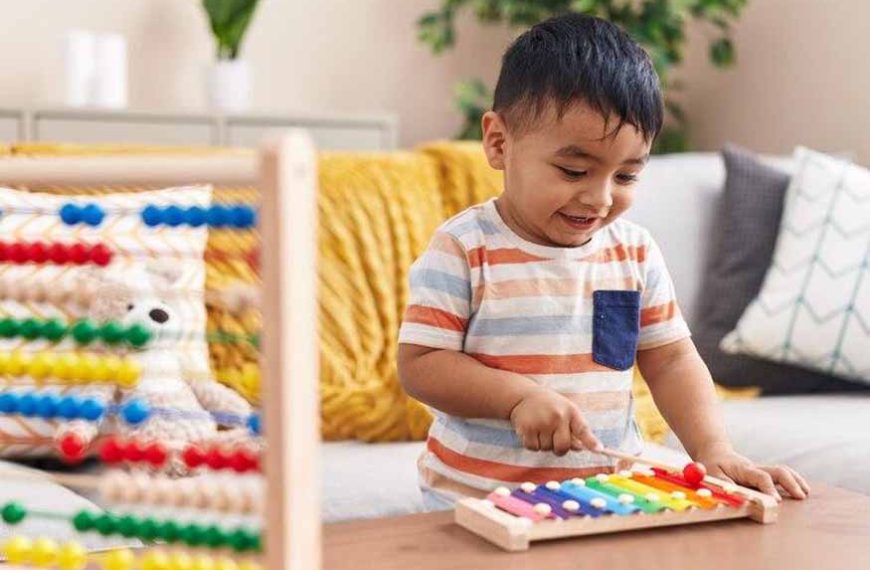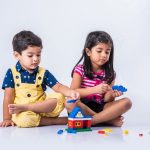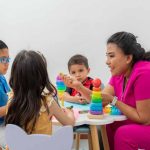The preschool years from ages 3-5 are a crucial time for development. Preschoolers are energetic, curious learners. Home provides flexible opportunities to engage preschoolers with activities fostering emerging skills in language, motor abilities, cognition and social-emotional intelligence. Well-designed play-based learning reinforces preschool lessons through interactive games and hands-on fun suited for limited attention spans. Parents play a key role in creatively tailoring activities to nurture all developmental domains. This article explores stimulating educational activities for preschoolers that seamlessly combine learning and fun at home during this important developmental window.
The Benefits of At-Home Activities for Preschoolers:
At-home activities offer many benefits for preschool-aged children:
- Reinforce learning from preschool or daycare:
- Encourage development:
- Promote bonding:
- Confidence builder:
At-home activities and games build on key skills and lessons being taught in early childhood education settings.
Tasks that may be completed at home can target areas of growth such as language, fine motor abilities, cognitive thinking, social-emotional learning, and self-control. The dexterity and hand-eye coordination of players are enhanced by engaging in games using entertaining materials.
Sharing activities together builds closer connections between parent and child. The one-on-one attention and enjoyment of learning through play strengthens attachment and family bonds.
Mastering engaging tasks and games at home instils pride and self-confidence in preschoolers as they hone new skills through hands-on experience. Children gain ownership of their learning through choice and active participation.
The key is making activities feel like play, not formal instruction. The activities below combine fun and learning goals to set preschoolers up for success.
Language and Literacy Activities:
Language and literacy development is critical during the preschool years. Here are some ways to build these skills at home:
- Read together:Make reading an interactive experience by asking questions, pointing out pictures, doing character voices, and inviting your child to turn pages or repeat phrases.
- Play rhyming or opposites games:
- Tell stories:
- Sing songs and nursery rhymes:
- Conduct interviews:
- Make experience books:
- Send notes:
- Listen to audiobooks:
- Invent new words:
Use rhymes or opposites to help expand vocabulary. Give a word and ask your child for a rhyme (cat, bat) or an opposite (big, little).
Make up stories together, taking turns adding to the tale. Encourage imaginative plots and silly characters.
Songs reinforce phonics, word families, and rhyming. Actions and gestures with songs also aid memorization.
Use a toy microphone to interview family members. Model asking questions and responding.
Have your child draw pictures and dictate words for homemade books about activities. Read it aloud together.
Supply paper and crayons for your child to write or dictate short notes you can deliver to family members.
Audiobooks build listening skills and model expressive reading. Take turns acting out stories or describing the action.
Make up silly words or nonsense names for things. See who can come up with the most unique creation.
Keep it playful by following your child’s interests. Provide diverse materials like magazines, story props, puppets and art supplies to spark language use.
Math and Science Activities:
Math, science and problem-solving skills can easily be incorporated into at-home play:
- Count everything:
- Sort objects:
- Compare sizes:
- Recognize shapes:
- Explore with water:
- Cook or bake together:
- Play with shadows:
- Examine nature:
Count stairs, snacks, toy cars – anything! See who can count to the highest number or take turns counting objects.
Sort blocks or toys by shape, colour, size, type, or other attributes. Identify what is the same or different.
Stack blocks or line up toys from biggest to smallest. Use descriptive words like tall, short, big, little, long, small.
Point out shapes around the house. Trace shapes with fingers or draw them on paper. Cut food into shapes.
Pour water between different-sized containers and measure using cups or spoons. Add food colouring, glitter, or objects that sink or float.
Have your child help measure ingredients and count scoops or stirs. Talk about chemical reactions.
Use flashlights and objects to cast shadows on the wall. See how shadows change by moving light sources.
Collect leaves, sticks, rocks, flowers or insects from outside. Categorize using a magnifying glass. Look up new finds in nature guides.
Preschoolers learn best through hands-on investigation. Enable discoveries by providing versatile materials and supervision for science experiments or math games.
Physical Activity:
Physical activity is vital for preschoolers to build strength, coordination and body awareness. Here are engaging ways to get them moving:
- Head outdoors:
- Play Follow the Leader:
- Have a dance party:
- Roll out play tunnels or mats:
- Play with balls or balloons:
- Go on an active scavenger hunt:
- Play sports:
- Go for bike or trike rides:
- Act out stories:
Outdoor time is essential. Play catch, go for walks, explore nature, blow bubbles or fly kites. Set up an easel or sensory bin outside.
Take turns leading everyone in active movements like jumping, marching, hopping, silly dances or animal walks.
Crank up music and dance together. Add props like scarves or maracas. Do the freeze dance by stopping when the music stops.
Encourage crawling, rolling, somersaulting and climbing over soft obstacles.
Throw, catch, kick or bat a ball. Keep balloons up in the air. Add a ball pit or Skittles with plastic bottles.
Hide objects around the house or yard and give clues for finding each one.
Try soccer, T-ball, bowling or basketball using kid-sized equipment. Focus on fundamental skills like throwing, catching and kicking.
Safety gear is a must! Explore the neighbourhood, do circles in a driveway or practice at a playground.
Use dramatic play and movement to bring picture books to life.
Keep activities energetic with short bursts of heart-pumping play throughout the day. Just wear them out before nap time!
In summary, the preschool years offer many opportunities for learning through purposeful play at home. As illustrated above, there are endless ways to engage preschool-aged children with fun yet educational activities across all developmental domains. When children are actively involved and hands-on with enjoyable tasks suited to their age, incredible learning takes place. Caregivers can tap into preschoolers’ natural curiosity through play, creative expression, investigation and movement. While kids interact with new materials and have rich experiences, parents can model and extend language, literacy, critical thinking, social skills, problem-solving and physical abilities. The interactive nature of learning through play builds cognitive as well as emotional skills essential for the transition to kindergarten. Homemade games, simple sensory bins and art projects also forge meaningful connections within families. Caregivers should follow the child’s interests to design activities that feel like play, not work. With some basic supplies and imagination, parents can structure the home environment to maximize learning potential during the short yet significant preschool window.
For more such interesting blogs, Visit EuroKids















